
11 minute read
Driving the Future - EV Charging
from EM October 2019
ACCELERATING THE SHIFT TO ELECTRIC VEHICLES
ENERGY MANAGER MAGAZINE • OCTOBER 2019 30 O rganisations can make a huge contribution to reducing the threat of climate change by transitioning to electric fleet vehicles, providing atwork charging for employees or turning car parks into EV friendly spaces. EV lowers costs, improves the customer and employee experience and makes a contribution to reducing carbon.
Public and business sectors have the scale to realise these benefits in a material way. They also have the advantage of a range of grants and financial incentives to assist them in transitioning to EV and building the required infrastructure. This large scale can also throw up unique challenges, most notably in getting sufficient power to the charge points when there are lots concentrated on one site, as well as the complexity of designing, planning, developing and operating the supporting charging infrastructure. THREE KEY BENEFITS OF SWITCHING TO EV: 1. Improve your sustainability and environmental compliance Electric vehicles are crucial to decarbonising transport and improving air quality. By demonstrating leadership in providing EV charging infrastructure and transitioning fleet vehicles to EV, businesses and public bodies can play a major role in reducing global greenhouse gas emissions, while inspiring wider EV adoption across society.
Organisations that fail to address their environmental responsibilities face a growing raft of financial penalties and green taxes. For example, London’s Ultra Low Emission Zone, which is expected to be rolled out in other cities, provides a powerful financial incentive to move to EV. 2. Reduce costs and generate revenue With the economies of scale of fleet management and falling technology prices for batteries, and charging infrastructure, the cost of EVs is reducing. Long term cost savings can be made by making the switch from petrol and diesel. But electrifying transportation also unlocks opportunities to integrate your EV infrastructure with renewable on-site distributed solutions such as solar and battery storage, which can further reduce energy costs and enhance sustainability across your entire estate. Installing onsite battery storage can also enable your business to earn money from your EV strategy by selling any spare power capacity back to the grid via lucrative Demand Side Response (DSR) and supply optimisation programmes. If grant funding is available this can be improved still further as upfront investment keeps ongoing operational costs low. 3. Improve your brand reputation and customer experience Growing public concern about the The acceleration towards sustainable transportation is being led by public bodies and commercial fleets, who are grasping the opportunity to make the shift to electric vehicles (EV) says John Hartley of Centrica Business Solutions. In the following article he outlines why organisations are making the change to EV and what they have to consider when they do.
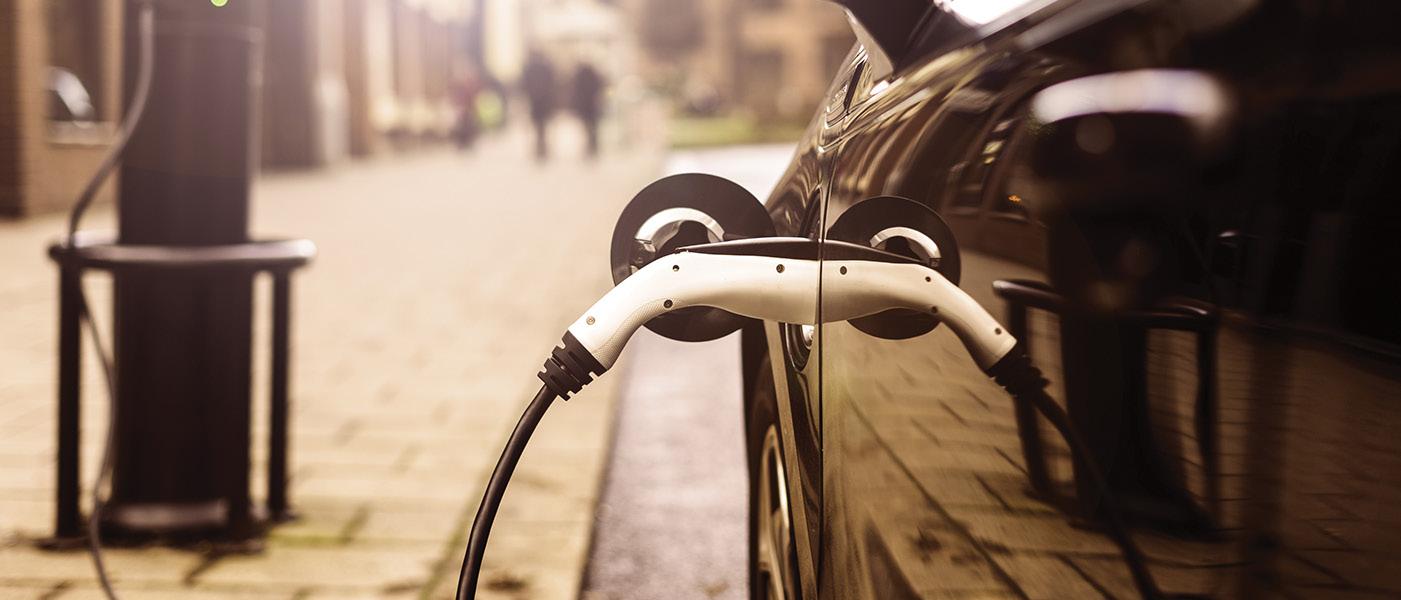
threat of climate change demonstrates an urgent need to take action on sustainability and improve your environmental credibility. While regulatory targets matter, pressure from your stakeholders can often be a more powerful motivator to make the shift to clean transport. Customers’ expectations are growing and they will value the convenience of using onsite charge points, while workplace EV charging also offers an attractive addition to your employee’s benefits package. Moving your fleet to EV is an effective way of expressing your corporate social responsibility (CSR) and succeeding through delighting all your stakeholders. KEY CONSIDERATIONS WHEN PLANNING AN EV STRATEGY
There are huge environmental and commercial benefits to making the shift to EV, but there are also a number of challenges. For example: • How do you connect and coordinate all the silos in the complex supply chain and various elements involved in developing a future-proofed EV project? • How do you secure sufficient sustainable power capacity to meet both immediate and future additional power needs? • How do you fund the cost of expanding your on-site generation and storage infrastructure without raiding your capital budgets? • How do you ensure the efficient long-term management of your EV operation using trusted software and apps that your drivers will find user-friendly? Planning and implementing the
complex EV infrastructure for atwork charging or back-to-base fleets requires specialist technical and regulatory expertise. Unless you have the right experience and resources available in-house, it’s likely that you will require expert support to guide your EV enablement package. This involves integrating the many disparate elements of the project, including software, hardware and energy provision; planning control; regulation, installation; operation and maintenance, etc.
It’s important to select a partner who has experience across the entire value chain, who will help to facilitate a joinedup approach between suppliers to avoid technical and operational inconsistencies. Future-proofing your EV enablement solution to avoid obsolescence is difficult when technology is evolving so quickly, but this is no reason to delay the transition and the financial and environmental benefits that this can bring.
Centrica Business Solutions has created an EV Enablement solution to provide the complete endto-end support to make the transition to EV simple and easy. Further information: www.centricabusinesssolutions.com
CASE STUDY DUNDEE CITY COUNCIL
ELECTRIC VEHICLES REDUCE CO2 IN DUNDEE
Centrica Business Solutions has designed and built an electric vehicle charging hub in Dundee, introducing fast and rapid chargers, solar power generation and on-site battery storage. • 30% of the city’s buses are now electric • 102 Plug-in taxis are now serving the city • 122 estimated tonnes of carbon reduction in the first year Dundee City Council wanted to kickstart a strategy to encourage the switch to Electric Vehicles (EV) across the city. The Council needed a trusted partner to deliver the work of its flagship EV charging hub, funded by the government’s Office for Low Emission Vehicles (OLEV) Go Ultra Low (GUL) award fund. Centrica Business Solutions was selected to help design and build one of the first city charger hubs in the UK to combine EV charging with on-site storage and renewable generation. This involved designing the electrical infrastructure on site,
contributing to the overall project design and budgeting, and programme managing the build, including civil and ground works and finish. The sustainable transportation project entailed working with multiple stakeholders to deliver a coordinated solution, along with the management of the new connection to the grid. THE RESULTS
Dundee City Council now has the largest fleet of electric vehicles of any local authority in the UK, with 87 to date. In the first year, the project saved an estimated 122 tonnes of carbon emissions. The city now has one of the most extensive charging infrastructures in the UK. Nine out of the top 10 most used rapid chargers in Scotland are located in Dundee. The city also boasts 102 ‘plug-in’ electric taxis and 30% of buses are now electric. Following the success of this initial project, Centrica Business Solutions has also been selected to construct a new Queen Street charging hub. Further information: www.centricabusinesssolutions.com

SCHOOLS OFFERED FREE EV CHARGEPOINT
Pod Point’s Electric Schools campaign, which launched last autumn, aims to raise awareness of the many benefits of transitioning to EVs, not least in terms of how they can help fight air pollution – which has been described as a public health crisis – and climate change. The campaign also strives to inspire young learners on how EV technology will revolutionise the way we travel and use energy, by paving the way for driverless cars and energy management systems like vehicle to grid. For the campaign, up to 30 primary schools in highly polluted areas are being given the opportunity to claim a free 7kW Pod Point EV chargepoint and installation, worth over £1,200. As part of the wider campaign, Pod Point’s in-house experts will visit schools nationwide to introduce the technology and deliver guest speaker sessions on EVs.
Under the Electric Schools campaign, chargepoints have so far been installed at primary schools in Leeds, London, Essex, and West Sussex.
All primary schools that want to introduce the topic of EVs can benefit from an educational toolkit that Pod Point has created as part of its Electric Schools campaign. The toolkit, which has been developed in line with Key Stage 2 curriculum guidelines, is packed with activities and resources for teachers and children, along with a factsheet for any parents that want to learn more about EVs. Erik Fairbairn, Pod Point CEO and Founder, said: “It feels like young learners are more engaged than ever with the environment and issues like air pollution and climate change. With this campaign Manufacturer Pod Point has relaunched its Electric Schools campaign for the new academic year, offering selected primary schools a free electric vehicle (EV) chargepoint to highlight the link between EVs and clean air.
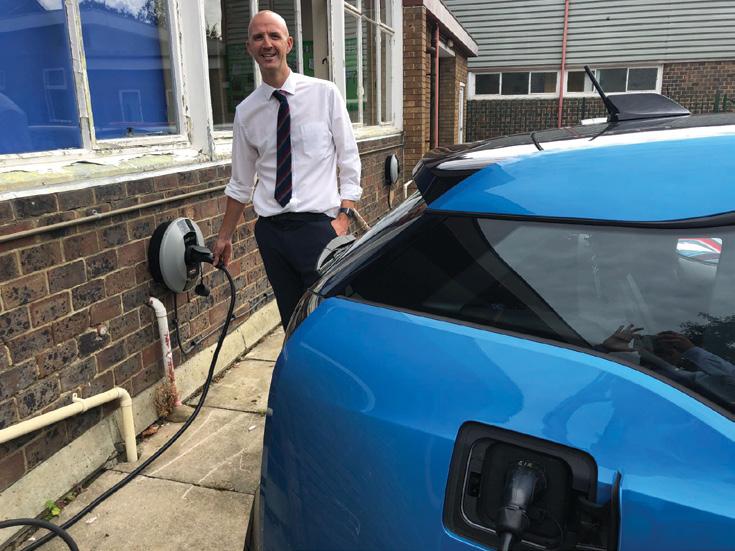
Matthew Andrews, Deputy Headteacher at Three Bridges Primary School
we’re highlighting how EVs can be part of the solution. We also want to make young people excited about the future of mobility and what road transport might look by the time they have finished studying.” Visit pod-point.com/electricschools or email electricschools@pod-point.com to find out more. Schools that don’t qualify for the free chargepoint (including secondary schools) can still benefit from a £100 discount by using the code “ELECTRICSCHOOLS” in the website enquiry form.
To date, a high proportion of public chargepoints have been installed through UK and devolved governmentfunded grant schemes, and local authority match-funding. As the electric vehicle (EV) charging infrastructure market has matured, so has the variety of procurement models and funding options available to public sector bodies. Private sector partnerships and revenue share arrangements are becoming increasingly common and a good choice for some local authorities, depending on the circumstances. In the Road to Zero strategy, published in July 2018, the Government stated its ambition “to encourage and leverage private sector investment to build and operate a thriving, selfsustaining public network”. With the right policy framework and more EVs on the road, the Government expects the market to deliver the public infrastructure needed in the long-term. Moving forward, procurement decisions by local authorities will therefore vary depending on the availability of government or private sector funding, where market failures emerge, the potential profitability of the charging network, and the level of risk that the local authority wishes to carry.
Energy Saving Trust’s guide, Procuring electric vehicle charging infrastructure as a local authority, describes the wide range of options open to local authorities to fund and manage public chargepoints, illustrated by case studies. Topics covered within include investing public funding, securing private investment, options around providing ROAD TO ZERO
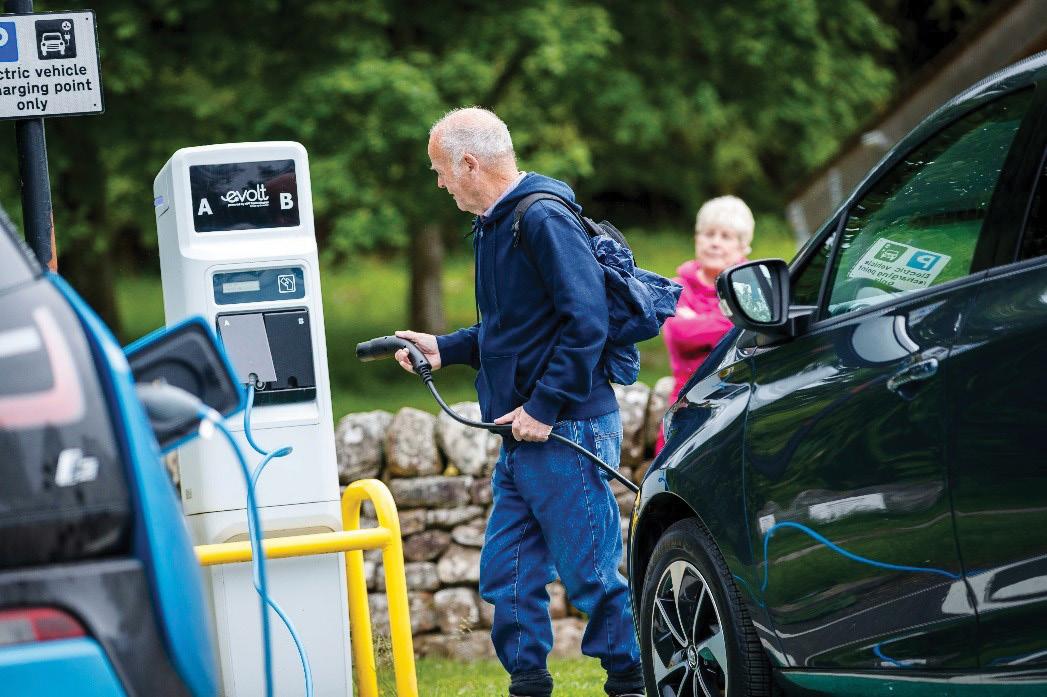
free chargepoints and working on private land, and more. All information is unbiased and transparent, provided through extensive research and firsthand experience in the industry. Six case studies document a range of approaches local authorities have taken to procure chargepoints in the UK.
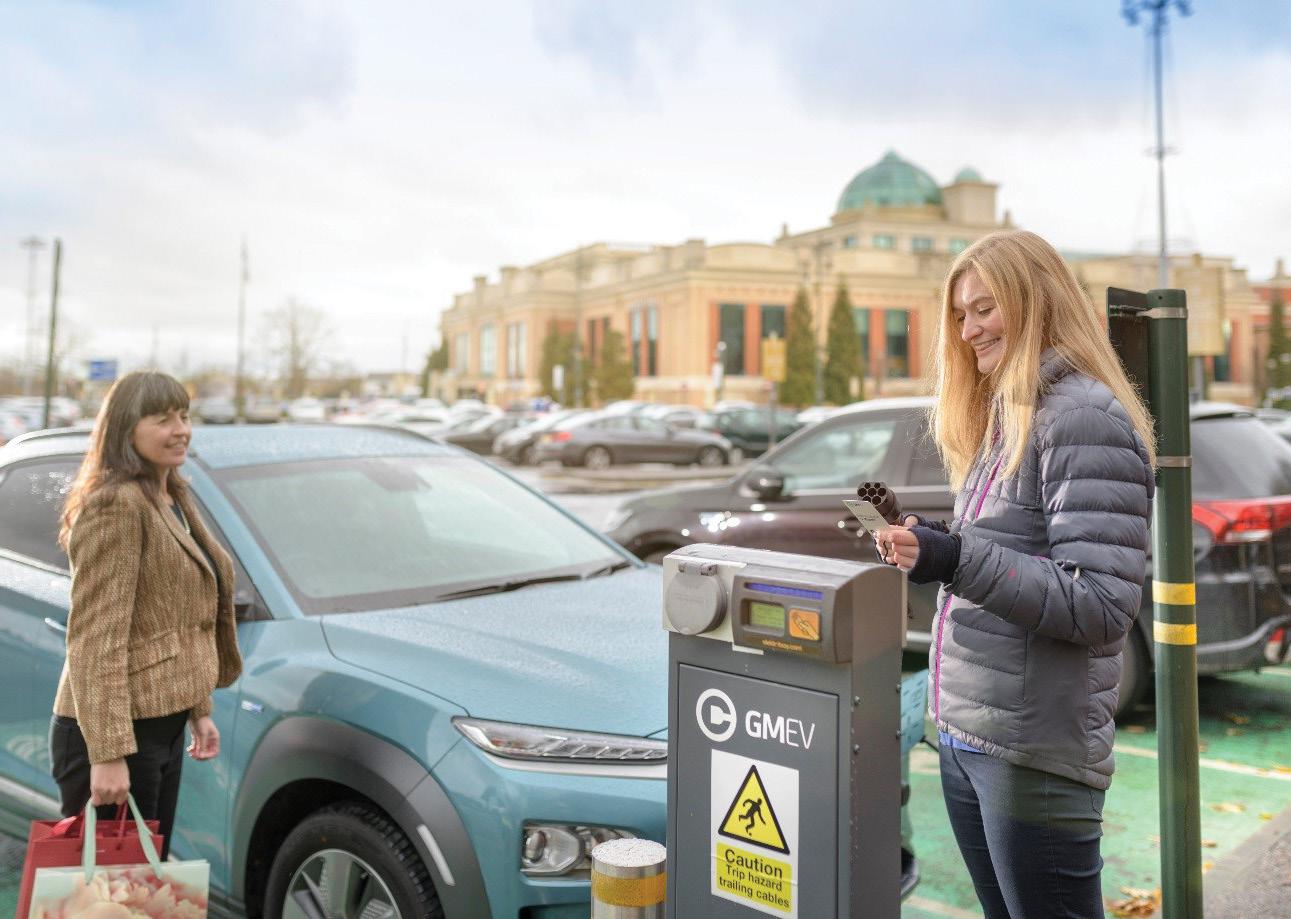
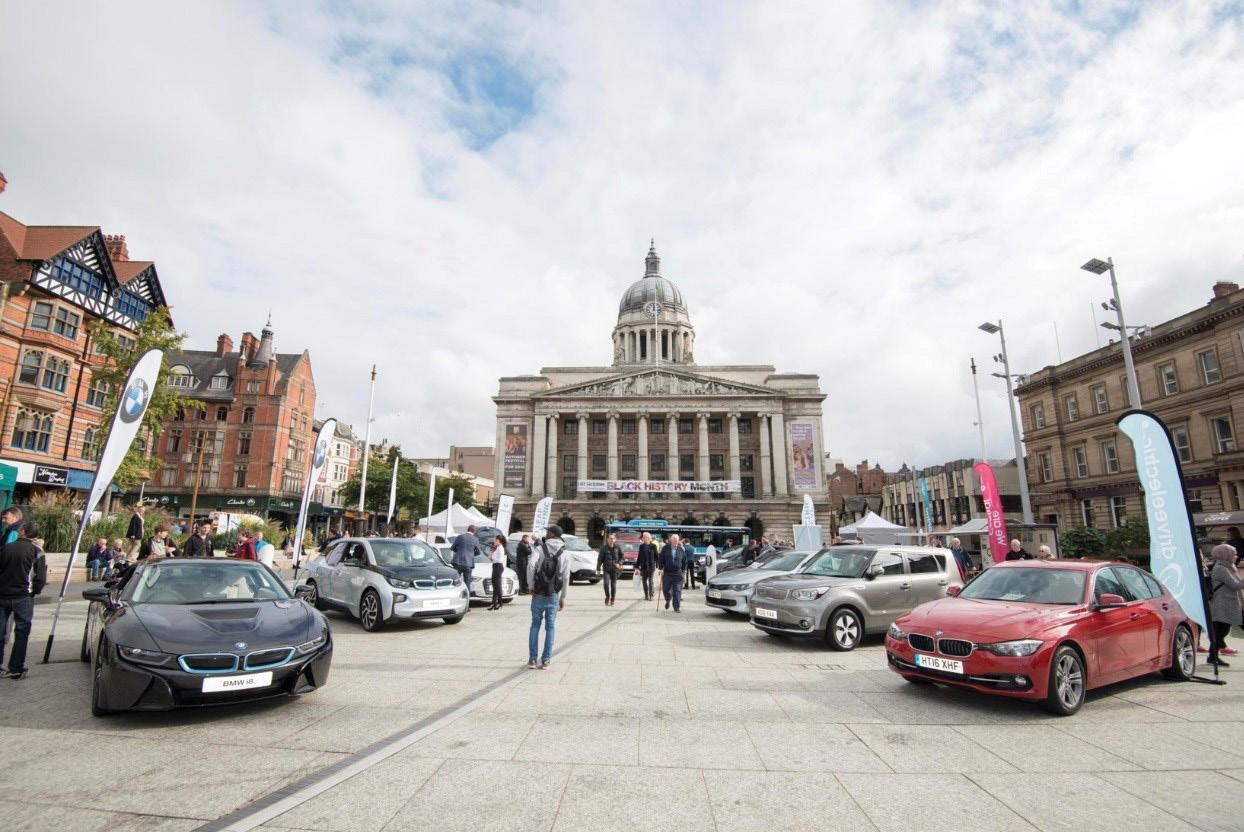
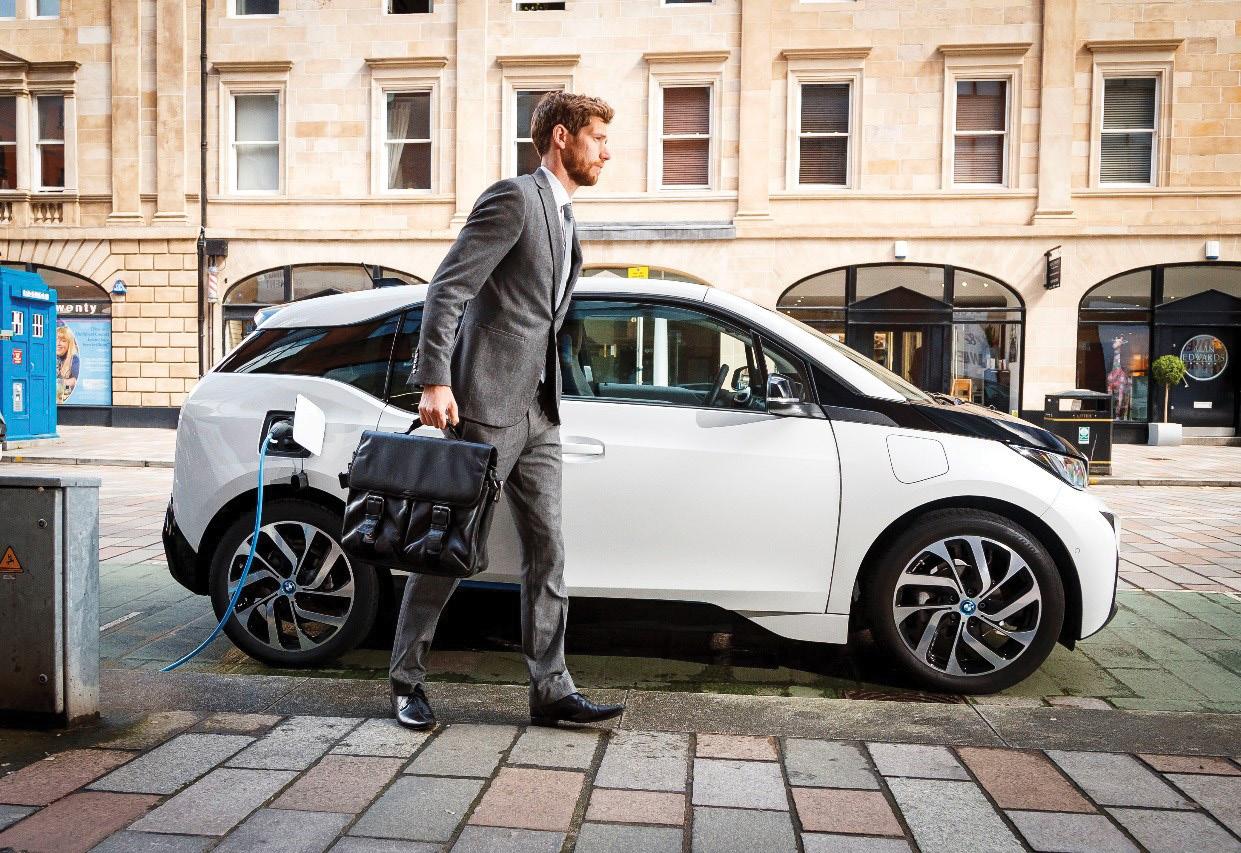
Two other guides complement this, altogether providing comprehensive guidance on procuring chargepoints, placing and integrating them, and managing costs. Positioning chargepoints and adapting parking policies for electric vehicles and Minimising the costs of street works and grid
connections for charging infrastructure can be found on the EST website, under Developing an electric vehicle charging infrastructure. ( https://www. energysavingtrust.org.uk/transport/ local-authorities/developing-electricvehicle-charging-infrastructure ). Local authorities looking for more tailored assistance, can take advantage of Energy Saving Trust’s Local Government Support Programme. Our three Regional Account Managers are based across England, and work with local authorities on a one-to-one basis, supporting the development of knowledge and sharing best practice. Funded by the Department for Transport, Energy Saving Trust can provide tailored support to help local authorities improve local air quality and reduce CO 2 emissions. We can offer impartial advice on chargepoint procurement, planning policies and can facilitate a team workshop or independently review your draft plans. The team can help your local authority identify suitable transport programmes as a local and regional level that can impact air quality, and help you link existing programmes and initiatives to develop a stronger strategy overall. Over the next few months the Regional Account Managers are holding a series of free webinars to help local authority officers build their knowledge and share expertise around low emission transport. Topics include air quality improvements, responding to the climate emergency, and stakeholder engagement. All webinars will be made available as recordings and will complement the charging guides and Local Government Support Programme offering.
Energy Saving Trust continues to deliver a range of other projects and funding streams on behalf of the Department for Transport (DfT) and Office for Low Emission Vehicles (OLEV) that support local authorities in England. The On-street Residential Chargepoint Scheme, delivered by Energy Saving Trust on behalf of OLEV, allows local authorities to apply for funding to help with the costs of procurement and installation of onstreet charging points for residential use. Local authorities can also apply to DfT’s eCargo Bike Grant Fund, delivered by the Energy Saving Trust to support the acquisition of ecargo bikes and make last mile delivery more sustainable.
Visit Energy Saving Trust’s Transport pages to download a copy of the charging infrastructure guides, and see what other support is suitable for you. www. energysavingtrust.org.uk/transport
MULTI-MILLION POUND SCHEME TO HELP IMPROVE AIR QUALITY LAUNCHES WITH THE LARGEST RAPIDCHARGING ELECTRIC VEHICLE NETWORK IN WEST YORKSHIRE
West Yorkshire’s largest electric vehicle rapid-charging network has gone live with the switchon of the first chargepoint in Bradford.
Located in Vicar Lane, the chargepoint is the first of 88 being installed across West Yorkshire as part of the £3 million-plus scheme to help improve the county’s air quality. New locations will be added every week until the network is completed later this year.
Each of the new sites, which are free to use until the end of October 2021, will have two bays. One will be exclusively for taxis and private hire vehicles and the second is for all other users. The rapid chargepoints can typically take under an hour to provide a full vehicle charge depending on your vehicle. People can register to use the network online at ev.engie.co.uk where they can also locate their nearest West Yorkshire chargepoint and find updates on the opening of new chargepoints. The scheme is a collaboration between West Yorkshire Combined Authority and its partner local authorities - Bradford, Calderdale, Kirklees, Leeds and Wakefield councils. Following its successful bid for £2 million funding from the Government’s Office for Low Emission Vehicles (OLEV), West Yorkshire Combined Authority appointed Leeds-based ENGIE to install, own and operate the new charging points.
West Yorkshire Combined Authority and the partnering local authorities are also providing a further £1.2 million of match funding for the scheme.
Cllr Manisha Kaushik, Deputy Chair of the West Yorkshire Combined Authority Transport Committee said: “Around 500 diesel taxis and private hire cars are forecast to be converted to hybrid and pure electric vehicles as a result of us rolling out these chargepoints. “Plus, the increased availability of rapid chargepoint locations will help counter ‘range anxiety’, which is currently discouraging people from switching to electric vehicles.
“Just recently West Yorkshire Combined Authority and the Leeds City Region Enterprise Partnership launched the Leeds City Region Climate Coalition as part of our commitment to tackle the global climate emergency. This scheme is an important step towards achieving our aims.”
Nicola Lovett, CEO of ENGIE UK and Ireland said: “These chargepoints will play a key role in tackling air pollution and creating a greener, cleaner place for people who live and work in West Yorkshire.
“At ENGIE we work hard to improve the lives of people in cities and urban areas and we are delighted to launch this electric vehicle charging network in the region.
“Providing green mobility solutions is just one part of a wider strategy where we support local authorities and the public in helping shape their environment as we move towards a net-zero carbon world. “There has been a real improvement in carbon reduction where we’ve implemented green initiatives in other cities and we are looking forward to seeing the West Yorkshire region benefit from this fantastic scheme.”
Cllr Sarah Ferriby, Bradford Council’s Executive Member for Healthy People and Places, said: “As part of our Low Emissions Strategy, we want to encourage residents and businesses in Bradford to consider switching to electric vehicles, and one of the best ways to do this is to make it convenient and free for people to access chargepoints.
“We are determined to increase our commitment to reduce the Council’s carbon footprint while staying at the forefront of new ultra-low emission technology.
Encouraging the use of electric cars helps us achieve both and we hope that the additional 20 charging points will make Bradford drivers think about making their next car an electric one.” www.engie.co.uk


